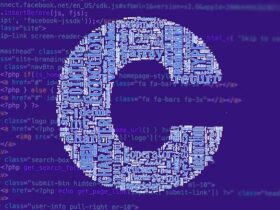In today’s fast-paced world, where ideas are as fleeting as they are brilliant, the necessity of capturing these ephemeral sparks of creativity cannot be overstated. Idea capture tools are essential in this quest, providing a repository for thoughts, inspirations, and brainwaves that might otherwise vanish into the ether.
These tools range from simple note-taking apps to comprehensive project management software, each designed to cater to different needs and workflows. This article delves into the nuances of ten such tools, offering a detailed exploration of their features and how they can seamlessly integrate into our daily lives to harness our most fleeting yet valuable asset: our ideas.
Key Takeaways
Idea capture tools are diverse, catering to various needs from basic note-taking to complex project organization.
Selecting the right tool depends on individual workflow, the complexity of ideas, and the need for collaboration.
These tools enhance productivity, creativity, and ensure no idea is lost.
10 Idea Capture Tools
1. Evernote
Evernote stands as a titan in the realm of idea capture, offering a versatile platform for note-taking, organizing, task management, and archiving. Its key features include the ability to create notes in various formats (text, photos, audio, web clippings), organize them into notebooks, and synchronize across devices.
Evernote’s powerful search functionality makes retrieving information effortless, even in handwritten notes or images. Additionally, its collaboration features allow for shared workspaces, making it a favorite among professionals for team brainstorming and project planning.
2. Trello
Trello‘s visually intuitive interface, based on the Kanban method, makes it ideal for managing projects and organizing ideas. It allows users to create boards (representing projects or themes) and cards (representing tasks or ideas) that can be moved across lists to track progress. Each card can be enriched with details like descriptions, checklists, attachments, and deadlines.
Trello’s simplicity in design belies its robustness in collaborative features, allowing teams to share boards, assign tasks, and comment on cards. This tool is particularly popular among teams for its ease of use and visual appeal in tracking project stages.
3. Notion
Notion is a versatile workspace that combines note-taking, task management, database, and project tracking functionalities. It’s highly customizable, allowing users to create pages that can contain various types of content like text, images, to-do lists, and embedded videos.
Notion’s unique selling point is its database feature, where users can create tables, kanban boards, calendars, and lists that interlink with each other. This interconnectivity makes it a powerful tool for complex project management, where various types of data and workflows need to be interconnected. Notion is favored for its flexibility, enabling users to create a personalized workspace that can evolve with their projects and ideas.
4. Microsoft OneNote
Microsoft OneNote serves as a digital notebook, offering a familiar, binder-like interface where you can store and organize your ideas. Its structure of notebooks, sections, and pages is intuitive, and it supports a variety of content types including text, drawings, and audio recordings. OneNote stands out for its handwriting recognition and drawing capabilities, appealing to those who prefer a more free-form method of capturing thoughts.
Its integration with other Microsoft Office apps makes it a convenient choice for those already within the Microsoft ecosystem. The tool is ideal for students and professionals who benefit from its organizational structure and seamless integration with Office Suite.
5. Google Keep
Google Keep is a straightforward, user-friendly tool for quickly capturing ideas and organizing them. Its simplicity lies in creating color-coded notes and lists that can be pinned for easy access. Keep integrates seamlessly with other Google services, making it a convenient choice for users heavily reliant on the Google ecosystem.
Its voice memo feature and the ability to transcribe text from images are standout features. Google Keep is perfect for those needing a no-frills, accessible tool for capturing thoughts on the go, syncing across devices, and collaborating with others through shared notes.
6. MindMeister
MindMeister specializes in mind mapping, a technique ideal for visually organizing and developing ideas. It allows users to create mind maps – visual diagrams that represent words, ideas, tasks, or other items linked to and arranged around a central concept. MindMeister’s intuitive interface makes it easy to add nodes, color-code them, and create hierarchical structures.
Collaboration features include real-time brainstorming and commenting. This tool is particularly useful for creative professionals, educators, and students who benefit from visualizing concepts and relationships between ideas.

7. Asana
Asana is a project management tool that excels in tracking tasks and ideas through to completion. It provides a flexible interface with features like task lists, kanban boards, and calendar views. Asana’s strength lies in its detailed task creation options – allowing users to add due dates, assignees, tags, and custom fields.
Its reporting and tracking tools provide an overview of project progress and individual workload. Asana is particularly effective for teams needing a robust tool for managing complex projects, with its extensive integrations and automation features streamlining workflow.
8. Bear
Bear is a note-taking app designed with a focus on simplicity and elegance. It stands out with its clean interface and markup editor, which supports inline images, to-do lists, and code snippets. Bear’s organization system uses a unique combination of tags and linking notes, offering a flexible way to categorize and retrieve content. Its cross-note linking feature is particularly useful for those who work on interconnected projects or ideas. Bear is ideal for writers, developers, and anyone who values a streamlined, aesthetically pleasing writing environment.
9. Zapier
Zapier isn’t a traditional idea capture tool; instead, it’s a powerful automation tool that connects your different apps and services. By automating tasks between apps, it helps in capturing and managing ideas more efficiently. For instance, you can set up a ‘Zap’ to automatically save email attachments to a Dropbox folder or append notes from an email to an Evernote notebook.
This indirect approach to idea capture is invaluable for those who work across multiple platforms and need a seamless way to consolidate their thoughts and tasks without manual intervention.
10. Roam Research
Roam Research is a note-taking tool designed for networked thought. It allows users to create a web of interconnected notes, making it ideal for complex thought processes, research projects, and idea development. Its bi-directional linking feature lets you connect ideas across different notes, creating a dynamic knowledge graph.
Roam’s non-linear approach to note-taking is its unique selling point, appealing to researchers, writers, and anyone engaged in deep, interconnected thinking. The tool’s ability to reveal connections between seemingly disparate ideas makes it a powerful asset for creative and critical thinking.
Conclusion
The landscape of idea capture tools is as varied as the minds they seek to assist. From simple note-taking apps to complex project management platforms, each tool offers unique features tailored to different needs and workflows. The key to maximizing their potential lies in understanding one’s specific requirements and working style.
Whether you’re a visual thinker who thrives on mind maps, a meticulous planner who needs detailed project tracking, or someone who juggles multiple platforms and prefers automation, there’s a tool designed to capture your ideas efficiently.
Embracing these tools not only ensures that no spark of creativity is lost but also enhances productivity, organization, and collaborative efforts, ultimately elevating the quality and execution of our ideas.



















